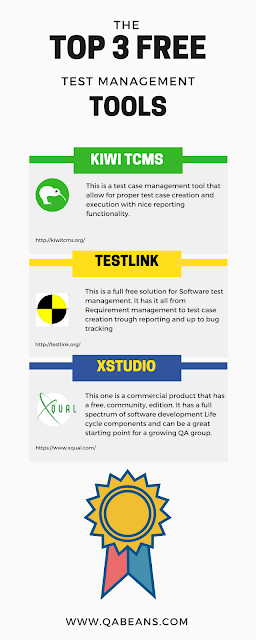 Today I want to take a look on the 3 freely available tools that allow for test management without breaking the bank those are good starting point for those who are looking for an alternative for high end tools like HP ALM and Smart Bear Test Complete.
Today I want to take a look on the 3 freely available tools that allow for test management without breaking the bank those are good starting point for those who are looking for an alternative for high end tools like HP ALM and Smart Bear Test Complete.Kiwi TCMS
This is a test case management tool that allow for proper test case creation and execution with nice reporting functionality. This tool does not contain internal bug tracking but integrates nicely with big players like BugZilla (A free Bug tracking tool)
TestLink
This is a full free solution for Software test management. It has it all from Requirement management to test case creation trough reporting and up to bug tracking. Everything can be done in this tool that has a lot of documentation online and a stable version the only downside is that its look and feel very outdated and might concern some modern testers out there
XStudio
This one is a commercial product that has a free, community, edition. It has a full spectrum of software development Life cycle components and can be a great starting point for a growing QA group. The free edition is limited to 200 test cases and MySQL database installation but for a fully professional free tool it a great starting point.
Conclusions
For those that are concentrating on the testing side only I would recommend the combination of Kiwi TCMS with Bugzilla as the go-to free solution and to those who require a free full-inclusive tool TestLink will be the thing. On the other hand if you are looking to potentially invest in a testing tool in the future but need a free fully functioning starting point you probably will choose the XStudio. It is true that all the big ones like offer the free trails and if you invest money you can go with them but keep in mind that the pricing point is completely different as well.If you know of other free testing tools for manual test managment please write in the comments below.
Comments
Post a Comment